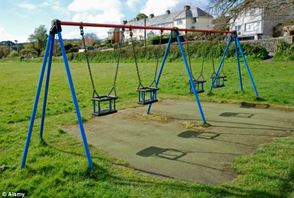 The award winning ecological landscape scheme at Welldon Park is not a typical school garden or public space with expansive mown grass, state of the art play equipment or sports facilities. So what is it about this garden that makes it special? Why does mown grass, tarmac and play equipment dominate so much of our youthful outside experiences and memories? Are our school grounds and public parks working to their maximum potential to be educational, inspiring, social, healthy places which improve learning and can tackle obesity? Does the Welldon Park Nature Trail provide the magic elements needed to fulfil these objectives?  Outside activities may not hold as much appeal today with television, PCs, computer games and smart phones. So what is the problem? The fact that endless amounts of educational information can be downloaded to our fingertips in seconds must mean our children have the edge when it comes to learning? The problem is they don’t! Statistics from the PISA Tests, the Programme for International Student Assessment show the UK academically lagging behind other counties in the world rankings. Today reading has been replaced with other forms of information technology and modern media; children grow up watching flashing image after flashing image obliterating their ability to concentrate on one concept for any length of time. There is a rising problem with disruptive pupils and Attention Deficit Disorder now commonly diagnosed in young students. A recent study also found that social media is resulting in children sleeping less talking to friends in their rooms until late hours, affecting their ability to concentrate. These things were unheard of thirty years ago with the majority of youth entertainment being outside the home.  Countries at the top of the rankings, China and Malaysia also have these distractions however the regimental style of their education system with a society very culturally disciplined, offsets any distraction to education. It has to be noted however that very intense education systems based on passing vigorous examinations causes stress, less creative students, and effect personal development such as team work and decision making. Some of the Academic success of China, Malaysia and Japan could be attributed to a cultural focus on recreational activities which exercise body, mind and spirit. Activities such as tai chi, yoga, and martial arts such as karate and kung fu have been shown to directly benefit academic development. The ancient Greeks used to say that ‘a healthy body was a healthy mind’ and these kinds of activities are mainstream in some of the world’s leading academic performing countries. Is physical fitness the key to better exam results?  The UK now has the highest rate of child obesity in Western Europe, which is estimated to cost the NHS about £4.2bn a year. It is now predicted that by 2050 over 50% of the population will be obese, a very worrying trend. This problem is not easy to tackle as it is a combination of bad diets and inactivity due to an ever more sedentary lifestyle, made worse by modern entertainment technology. 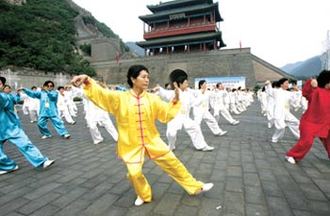 In 1995 China adopted a national fitness initiative ‘The Physical Health Law’ of the Peoples Republic of China. This imposed a series of rules and regulations on top of large investment in public sports facilities and multi functional open spaces for a diverse array of physical activities to be accessible to the population. A survey released by the State Physical Culture Administration indicates that at present 33.9% of the population between 7 and 70 exercises regularly and 60.7 percent of the urban population goes to sports clubs to engage in fitness activities. 37 percent of China's total population participates in regular physical exercises and about 95 percent of young students meet the ‘National Physical Exercise Standard’. The question is, could this type of initiative work in the UK? The idea of making it law to exercise and keep fit seems rather harsh and I could not see the British public adhering to such a state intervention. An annual health examination to see if any given child reaches the ‘national standard’ would be seen as cruel, degrading, not to mention humiliating.  On the build up to the 2012 Olympic Games in London the government invested millions of pounds into sports facilities for schools and public open spaces. Vast regeneration projects meant sport facilities became more accessible to people. This combined with public enthusiasm for the games helped Britain in winning a spectacular amount of medals and created an enhanced feeling of national pride and sporting achievement.  So why with all this investment and achievement are we still becoming unhealthier and obesity is still rising? The games were a fantastic thing for the country, but will its sporting legacy live on? Wimbledon is a great British sporting event internationally recognized and watched by millions. For the two weeks Wimbledon is scheduled on our TV screens every year and for the subsequent two weeks after you can walk up and down Britain, go into any public park and every tennis court is full. But if you go a month after you will be lucky to see one court in use and for the remainder of the year these will mostly be empty.  Landscapes need to be multifunctional and diverse in our schools and open spaces in order for them to be effective for people. Places for sport are important and mown grass has a very important multi functional part to play in recreation. Landscapes of the future need to excite and inspire us to interact with them, if not the next generation will always choose the unhealthy option. We live in a world of rising energy costs, child obesity, biodiversity destruction, global warming, atmospheric pollution, urbanization and social degradation. Landscapes around us must provide food, education, wildlife habitat, community spirit, exercise, energy security, climate control, flood defense, waste recycling, theatre and excitement. This can all be achieved with good design and management. 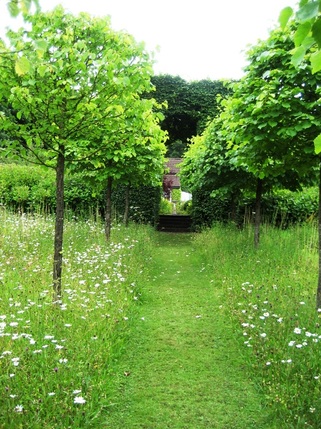 A school landscape scheme above all should embody the educational representation of these issues combined in an ecosystemic spatial arrangement which teaches the children about the interconnectivity of the natural world they live in providing multifunctional spaces for various activities. In traditional Chinese gardens using Feng Shui principles, gardens act as reenactments of the natural world as a microcosm. A pointed rock would represent a mountain a pond would represent a great lake and this would give the garden reference to the real life. Many modern day topical issues such as eating healthily, energy conservation, biodiversity, exercise and waste recycling can be represented, taught and actively practiced on school grounds in appropriately designed eco gardens. A school yard habitat serves as a living laboratory where students can engage in hands on inquiries into the natural world ideal for science lessons. Gardening is great exercise for children and if they are involved in the creation and maintenance of an area they learn to respect the hard work and skill necessary to produce and maintain an attractive environment. A great sense of pride and achievement can be gained from this sort of hands on outside activity with the added benefit of developing a lifelong interest in conservation and nature conservation. School landscape schemes should go further than just a ‘wildlife area’ or a ‘vegetable area’ school grounds should be a fully functional ecosystem and children should actively understand their place in it. The types of beneficial landscape features which can be added are endless but for there to be an interactive educational value for the students good design must be applied. 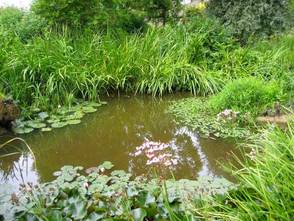 If there is a part of the school site which is liable to flooding in winter meandering dry river beds can be channelled out into a new retention pond. This can be fenced off for safety and stocked with native wetland plants and used in science lessions. This new habitat will give children a visual reference to natural hydraulic processes in the landscape as well as providing a wildlife watching area. The dry river beds can channel storm water through vegetable beds providing irrigation instead of wasting, money, energy and time with manmade watering systems. 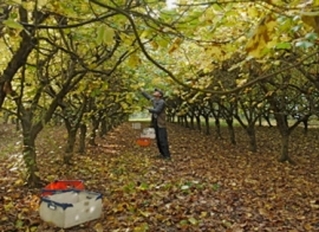 Overgrown disused edges to school boundaries can be planted with nut and fruit orchards giving height and elevation to flat sterile playing fields. Lower canopies can be planted with small fruit bushes like gooseberries then perennial vegetables like artichokes. As well as providing food this will give areas of enclosure and seasonal interest. Within these new food forests gravel clearings can be dotted about, allowing children to form new groups perhaps a bird watching group in one area and a yoga group in another. 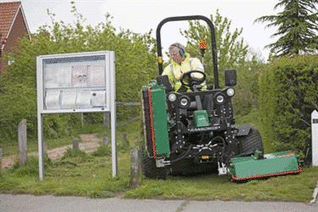 Commercial ride-on mowers are some of the most polluting machines inside our towns and cities. Instead of schools paying expensive private contractors to cut 14 times per year animals such as goats could be grazed with the money more economically spent on other things. This would improve air quality and add other educational productive elements to the school community. 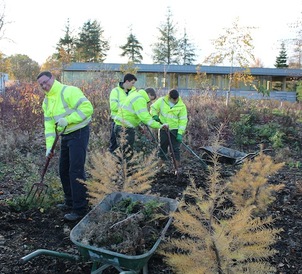 Not all students are born academics, some students have talents beyond the curriculum’s subject base and some disruptive disinterested pupils could benefit themselves and other students by opting out of one or two subjects and working towards a practical certificate, conducting projects and improvements on the school grounds. This could be managing livestock or growing food from the site. With a multifunctional school landscape scheme based on ecology more learning opportunities could be explored for all types of students. 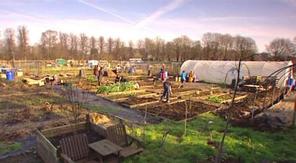 Outside class rooms and activities can help enhance concentration inside the class room. It has been proven that interacting with green environments relieves stress and improves behaviour. Charitable organisations such as ‘Thrive’ are built on this logic. This organisation gets together ex-alcoholics or people with mental illness to practice gardening regularly, with life changing results for its participants. 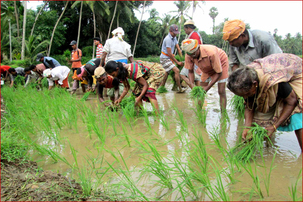 Some of the biggest problems we have socially today are inside high density, urban environments. Family breakdown is the single biggest source of every other urban problem we see in society today be it gangs, drugs, prostitution or violence. The strongest, healthiest communities on the planet are the small farming or fishing communities of the world where people live close to the land. Strong family and community bonds are built on team efforts with a spiritual well being of living close to and working with nature. Can these communities be replicated inside modern British cities? Yes! And there are examples, just walk onto any allotment in the inner City of London and it does not matter if they are Turkish, Chinese, Jamaican, Nigerian, Romanian, Iraqi, Polish or Irish the result is always the same, a healthy, friendly, interactive community brought together by this basic cord inside all of us. 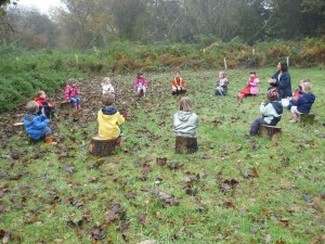 A recent survey of British school children unveiled some worrying facts about their understanding of food. A third of all primary children were found to think cheese grows on a plant, with 1 in 10 thinking tomatoes grew underground. With so much of the evidence pointing towards greener schools being healthier schools which perform better on the academic stage this makes worrying reading. For the future to be bright for Britain in a more competitive global world, our education system has to be up to world standards. Trends in Western society have presented us with new national challenges that must be met on a local level. Landscapes that just cater for football, or can only be expensively maintained by polluting fossil fuel reliant machinery cannot be the landscapes of the future. 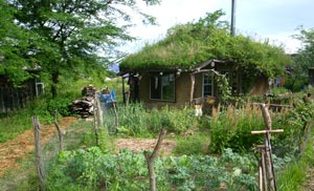 School gardens must allow a diversity of captivating activities which educates children about the world we live in a sustainable context. More ecological landscape schemes in schools will add extra activities for less academically able students and enhance the academic qualities of those who are. In an era of peaking oil extraction, schools and public open spaces in Britain should be at the forefront of sustainable landscape development and use this process to enhance the performance of its educational establishments. The Welldon Park Nature Trail: A case study.  The structure of the Welldon Park scheme is very simple consisting of a new woodland pathway or nature trail, that twists and meanders around the school, creating a journey through various new landscape types. In the morning and at home time parents would commonly amass outside the school gates creating an impassable mass of bodies. Since the nature trail was installed parents and students walk a circuit of the trail exploring areas of the school that were before unused. Along the nature trail there are seating areas to allow for contemplation, group activities and outside classes. Existing woodland areas have been thinned to create transitional zones of wildlife value and allow access for nature discovery. The woodland thinning has given opportunities to plant more diverse plant species including fruiting shrubs and perennial vegetables. New native woodland plants and bulbs have been planted in and amongst sculptural log piles to encourage insects to thrive. The combination of wild planting, deadwood, wild meadows, drainage swales, bog gardens, nature watching huts, a fruit orchard and an outside theatre has encouraged pupils to perceive outside space with enthusiasm. 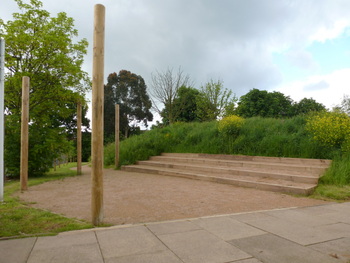 The Outside Theatre The Outside theatre provides the opportunity for performance and drama. Children can formulate an array of constructive play scenarios around this type of landscape feature. The Theatre is multi functional and can also be used for outside performance, lectures, community groups, after school clubs or used as an extra classroom. 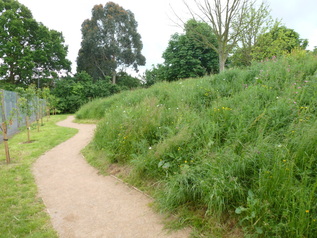 The Wild Flower Meadow The Meadow is a tapestry of native grasses and wild flowers. In the last 100 years we have lost 90 percent of our meadow land due to intensive farming methods. The food and shelter from the flowering plants produce food for creatures higher up the food chain such as bats, lizards, birds, hedgehogs, voles and other small mammals. Many native wild plants found inside meadows have numerous medicinal and environmental indicator qualities. Species identification can become a worthwhile outside class activity. In an urban environment meadows help to cool nearby buildings in summer and raise their temperature in winter. They can also reduce flash flooding in heavy rain. Meadows are an alternative to mown grass which is expensive to maintain consuming a lot of energy and with machinery which pollutes the environment. Meadows only have to be cut once or twice a year and the hay can be used as fodder for animals or composted. 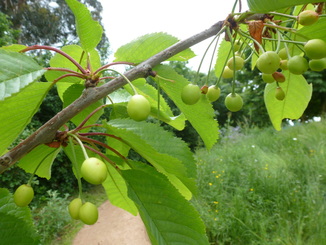 The Orchard In Britain today our farming relies heavily on fossil fuels, large powerful machines plough our fields planting grains and annual crops producing food for animals and people. The problem is Oil prices are rising quickly as extraction peaks and at some point in the future it will be economically unviable to produce food as we have since the industrial revolution. A huge percentage of modern farming is already heavily subsidised by the government with Britain importing the majority of its food. Before the age of combine harvesters and tractors nut and fruit orchards were common in Britain. The population relied on this permanent low energy input food production and will eventually come to rely on this again. Ironically the type of food produced in orchards is the healthiest to consume for a balanced diet. Processed carbohydrates such as flour and sugars are the source of many modern health issues such as type 2 diabetes and Obesity. Nut orchards produce the same amount of carbohydrate per square metre as grains about 2 ton per acre with the advantage of being a low energy input system. Nuts as well as providing staple carbohydrates are rich in essential omega 3 fatty acids which are lacking in many of our diets and essential for brain development in children. 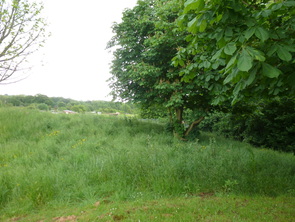 Woodland Habitats There were already some established trees along the nature trail route with some dense tree scrub along the boundary fence. Scrub was thinned and a diverse array of native woodland plants was planted within the woodland. Dead wood was brought to the site to try to kick start the process of natural decomposition and recycling. Dead wood habitat is an essential component to woodlands providing shelter for small creatures and food for complex fungi systems. The woodland areas provide many educational and fun activities for the children including, climbing, den building, wildlife watching, scientific surveys and Creative pursuits. 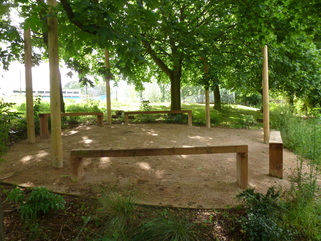 Outside Classrooms Large circular areas with sleeper benches and surfaced with free binding gravel make up the multifunctional outside classrooms. Large vertical round posts provide opportunities for shelter from the elements as well as exhibition displays. These external spaces can be used for group discussions, martial arts, after school clubs, reading, storytelling and teaching. 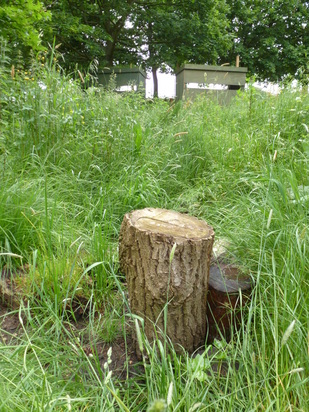 Wetland Drainage Bogs Water is an important part of any landscape, especially for wildlife and educational gardens. At Welldon Park we excavated a bog area at the lowest part of the site. We created a series of pebble swales which feed excess storm water into the bog area. This basic drainage system visually communicates natural landscape processes to the children and teaches them the landscape is a living entity. Standing water is always a safety issue in schools but these swales and bogs are designed to be just moist to the touch. The damp areas combined with the wetland meadow plants have created a landscape teeming with wildlife and ecology. These areas can be case studies incorporated into curriculum subjects such as geography, environmental science, biology, chemistry, physics and mathematics. 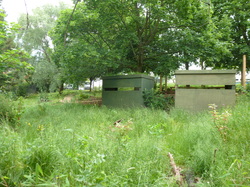 Wildlife Watching Hides Wildlife Hides are a great way for students to conceal themselves within the landscape. Not only do they give the opportunity to spot wildlife by framing an area of landscape it gives the observer a different perception of that space. The ability to sit and watch for wildlife encourages the discipline of patience and concentration a much welcome skill in children. The wild areas where hides are situated are peaceful tranquil places which evoke an inner peace and spiritual enrichment of the occupier.
0 Comments
Leave a Reply. |
AuthorPaul Nicolaides is a landscape Architect from North London and Director of Ecospaces Limited ecological Landscape design & build contractors. His ambition is to help accelerate change to a more sustainable ecological society. A society that plans its urban environments integrating agriculture, wildlife habitat, natural processes, recycling, industry, and sustainable urban drainage. Above all Paul aims to integrate these disciplines and realise there compatibility both on a local and landscape level. Archives
July 2018
Categories |
Photos from Tauralbus, Kurayba, ChodHound, tristanloper, scott1346, Sustainable sanitation, RobBixbyPhotography, The hills are alive*, Bobby McKay., ell brown, ncwetlands.org, Drantcom, alh1, Verokark, U.S. Embassy New Delhi, John Brighenti, umseas, wuestenigel, nestor galina, Sander van Dijk, mikecogh, oatsy40, foundin_a_attic, ndrwfgg, The Garden Smallholder, Aaron Volkening, wallygrom, Sander van Dijk, Base Camp Baker, Local Food Initiative, Kansas Poetry (Patrick), blachswan, infomatique, Phil Roeder, aschutz57
 RSS Feed
RSS Feed
